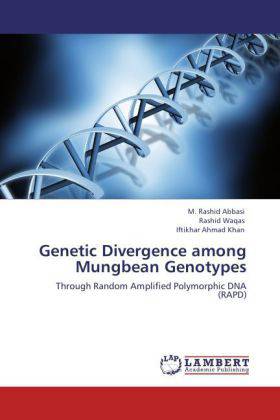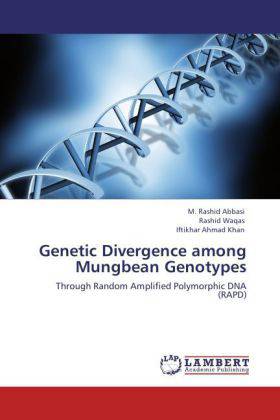
- Afhalen na 1 uur in een winkel met voorraad
- Gratis thuislevering in België vanaf € 30
- Ruim aanbod met 7 miljoen producten
- Afhalen na 1 uur in een winkel met voorraad
- Gratis thuislevering in België vanaf € 30
- Ruim aanbod met 7 miljoen producten
Zoeken
Genetic Divergence among Mungbean Genotypes
Through Random Amplified Polymorphic DNA (RAPD)
M Rashid Abbasi, Rashid Waqas, Iftikhar Ahmad Khan
Paperback | Engels
€ 48,45
+ 96 punten
Omschrijving
Mungbean (Vigna radiata L.) is one of the important legumes and a well-known economic crop in tropical and subtropical countries. It belongs to the family Leguminosae with diploid chromosome number 2n = 2x = 22. (Smart 1990).and is native to Indo-Burma (Myanmar) region of Asia. The primary gene center of diversity for mungbean was suggested to be the central Asian region (Vavilov, 1951) with India as the gene center and probable center of domestication (Smartt, 1985).So India is considered as its land of origin (Loh and Stacey, 2003). It has several synonyms like greengram, moong, goldengram, oregon pea, chickasono pea, chickasaw pea and chiroko It is short-stature, less than 1.25 m, depending on the variety and growing conditions (Watt et al. 1977). It is a pulse or food legume crop used primarily as dried seed and occasionally as forage or green pods and seeds for vegetables (Lawn 1995). On a dry-weight basis it contains 25 to 28% protein, 1.0 to 1.5% fats, 3.5 to 4.5% fiber, 4.5 to 5.5% ash and 60 to 65% carbohydrate (Lawn and Ahn, 1985).
Specificaties
Betrokkenen
- Auteur(s):
- Uitgeverij:
Inhoud
- Aantal bladzijden:
- 88
- Taal:
- Engels
Eigenschappen
- Productcode (EAN):
- 9783847335894
- Verschijningsdatum:
- 5/01/2012
- Uitvoering:
- Paperback
- Formaat:
- Trade paperback (VS)
- Afmetingen:
- 152 mm x 229 mm
- Gewicht:
- 140 g

Alleen bij Standaard Boekhandel
+ 96 punten op je klantenkaart van Standaard Boekhandel
Beoordelingen
We publiceren alleen reviews die voldoen aan de voorwaarden voor reviews. Bekijk onze voorwaarden voor reviews.











